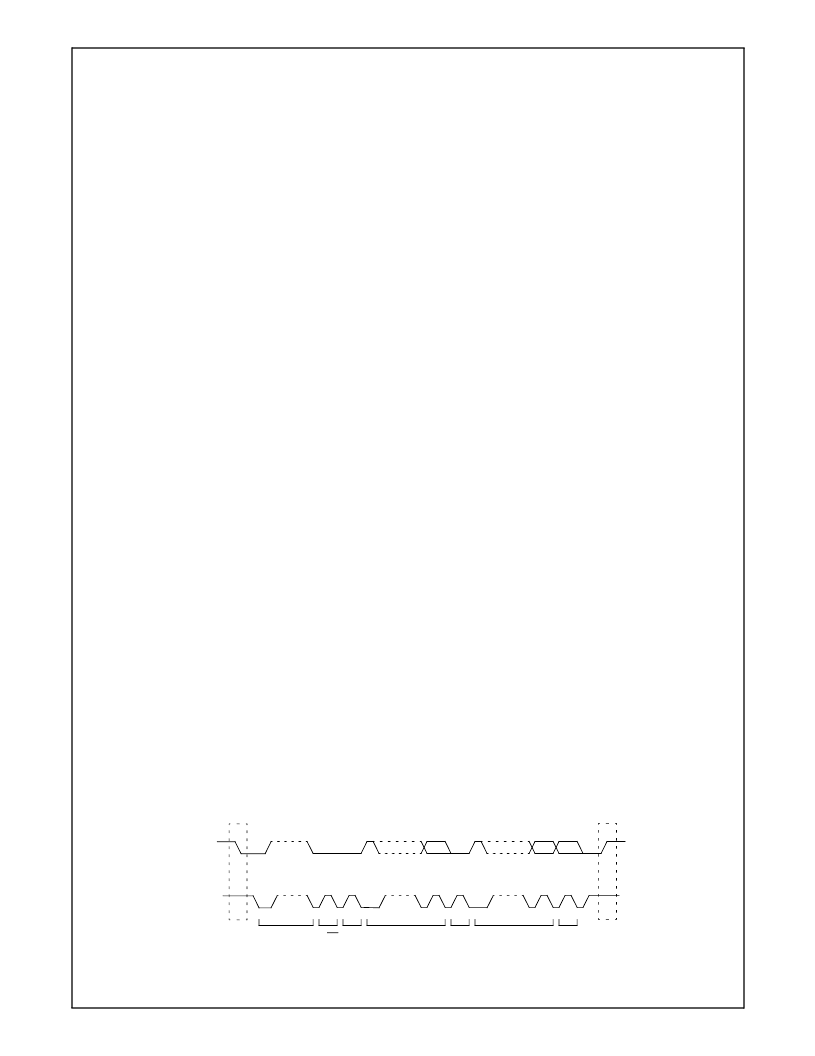- 您現(xiàn)在的位置:買賣IC網(wǎng) > PDF目錄376338 > SC2200UCL-266 (National Semiconductor Corporation) Thin Client On a Chip PDF資料下載
參數(shù)資料
| 型號(hào): | SC2200UCL-266 |
| 廠商: | National Semiconductor Corporation |
| 元件分類: | 微處理器 |
| 英文描述: | Thin Client On a Chip |
| 中文描述: | 瘦客戶機(jī)片上 |
| 文件頁(yè)數(shù): | 132/433頁(yè) |
| 文件大?。?/td> | 3255K |
| 代理商: | SC2200UCL-266 |
第1頁(yè)第2頁(yè)第3頁(yè)第4頁(yè)第5頁(yè)第6頁(yè)第7頁(yè)第8頁(yè)第9頁(yè)第10頁(yè)第11頁(yè)第12頁(yè)第13頁(yè)第14頁(yè)第15頁(yè)第16頁(yè)第17頁(yè)第18頁(yè)第19頁(yè)第20頁(yè)第21頁(yè)第22頁(yè)第23頁(yè)第24頁(yè)第25頁(yè)第26頁(yè)第27頁(yè)第28頁(yè)第29頁(yè)第30頁(yè)第31頁(yè)第32頁(yè)第33頁(yè)第34頁(yè)第35頁(yè)第36頁(yè)第37頁(yè)第38頁(yè)第39頁(yè)第40頁(yè)第41頁(yè)第42頁(yè)第43頁(yè)第44頁(yè)第45頁(yè)第46頁(yè)第47頁(yè)第48頁(yè)第49頁(yè)第50頁(yè)第51頁(yè)第52頁(yè)第53頁(yè)第54頁(yè)第55頁(yè)第56頁(yè)第57頁(yè)第58頁(yè)第59頁(yè)第60頁(yè)第61頁(yè)第62頁(yè)第63頁(yè)第64頁(yè)第65頁(yè)第66頁(yè)第67頁(yè)第68頁(yè)第69頁(yè)第70頁(yè)第71頁(yè)第72頁(yè)第73頁(yè)第74頁(yè)第75頁(yè)第76頁(yè)第77頁(yè)第78頁(yè)第79頁(yè)第80頁(yè)第81頁(yè)第82頁(yè)第83頁(yè)第84頁(yè)第85頁(yè)第86頁(yè)第87頁(yè)第88頁(yè)第89頁(yè)第90頁(yè)第91頁(yè)第92頁(yè)第93頁(yè)第94頁(yè)第95頁(yè)第96頁(yè)第97頁(yè)第98頁(yè)第99頁(yè)第100頁(yè)第101頁(yè)第102頁(yè)第103頁(yè)第104頁(yè)第105頁(yè)第106頁(yè)第107頁(yè)第108頁(yè)第109頁(yè)第110頁(yè)第111頁(yè)第112頁(yè)第113頁(yè)第114頁(yè)第115頁(yè)第116頁(yè)第117頁(yè)第118頁(yè)第119頁(yè)第120頁(yè)第121頁(yè)第122頁(yè)第123頁(yè)第124頁(yè)第125頁(yè)第126頁(yè)第127頁(yè)第128頁(yè)第129頁(yè)第130頁(yè)第131頁(yè)當(dāng)前第132頁(yè)第133頁(yè)第134頁(yè)第135頁(yè)第136頁(yè)第137頁(yè)第138頁(yè)第139頁(yè)第140頁(yè)第141頁(yè)第142頁(yè)第143頁(yè)第144頁(yè)第145頁(yè)第146頁(yè)第147頁(yè)第148頁(yè)第149頁(yè)第150頁(yè)第151頁(yè)第152頁(yè)第153頁(yè)第154頁(yè)第155頁(yè)第156頁(yè)第157頁(yè)第158頁(yè)第159頁(yè)第160頁(yè)第161頁(yè)第162頁(yè)第163頁(yè)第164頁(yè)第165頁(yè)第166頁(yè)第167頁(yè)第168頁(yè)第169頁(yè)第170頁(yè)第171頁(yè)第172頁(yè)第173頁(yè)第174頁(yè)第175頁(yè)第176頁(yè)第177頁(yè)第178頁(yè)第179頁(yè)第180頁(yè)第181頁(yè)第182頁(yè)第183頁(yè)第184頁(yè)第185頁(yè)第186頁(yè)第187頁(yè)第188頁(yè)第189頁(yè)第190頁(yè)第191頁(yè)第192頁(yè)第193頁(yè)第194頁(yè)第195頁(yè)第196頁(yè)第197頁(yè)第198頁(yè)第199頁(yè)第200頁(yè)第201頁(yè)第202頁(yè)第203頁(yè)第204頁(yè)第205頁(yè)第206頁(yè)第207頁(yè)第208頁(yè)第209頁(yè)第210頁(yè)第211頁(yè)第212頁(yè)第213頁(yè)第214頁(yè)第215頁(yè)第216頁(yè)第217頁(yè)第218頁(yè)第219頁(yè)第220頁(yè)第221頁(yè)第222頁(yè)第223頁(yè)第224頁(yè)第225頁(yè)第226頁(yè)第227頁(yè)第228頁(yè)第229頁(yè)第230頁(yè)第231頁(yè)第232頁(yè)第233頁(yè)第234頁(yè)第235頁(yè)第236頁(yè)第237頁(yè)第238頁(yè)第239頁(yè)第240頁(yè)第241頁(yè)第242頁(yè)第243頁(yè)第244頁(yè)第245頁(yè)第246頁(yè)第247頁(yè)第248頁(yè)第249頁(yè)第250頁(yè)第251頁(yè)第252頁(yè)第253頁(yè)第254頁(yè)第255頁(yè)第256頁(yè)第257頁(yè)第258頁(yè)第259頁(yè)第260頁(yè)第261頁(yè)第262頁(yè)第263頁(yè)第264頁(yè)第265頁(yè)第266頁(yè)第267頁(yè)第268頁(yè)第269頁(yè)第270頁(yè)第271頁(yè)第272頁(yè)第273頁(yè)第274頁(yè)第275頁(yè)第276頁(yè)第277頁(yè)第278頁(yè)第279頁(yè)第280頁(yè)第281頁(yè)第282頁(yè)第283頁(yè)第284頁(yè)第285頁(yè)第286頁(yè)第287頁(yè)第288頁(yè)第289頁(yè)第290頁(yè)第291頁(yè)第292頁(yè)第293頁(yè)第294頁(yè)第295頁(yè)第296頁(yè)第297頁(yè)第298頁(yè)第299頁(yè)第300頁(yè)第301頁(yè)第302頁(yè)第303頁(yè)第304頁(yè)第305頁(yè)第306頁(yè)第307頁(yè)第308頁(yè)第309頁(yè)第310頁(yè)第311頁(yè)第312頁(yè)第313頁(yè)第314頁(yè)第315頁(yè)第316頁(yè)第317頁(yè)第318頁(yè)第319頁(yè)第320頁(yè)第321頁(yè)第322頁(yè)第323頁(yè)第324頁(yè)第325頁(yè)第326頁(yè)第327頁(yè)第328頁(yè)第329頁(yè)第330頁(yè)第331頁(yè)第332頁(yè)第333頁(yè)第334頁(yè)第335頁(yè)第336頁(yè)第337頁(yè)第338頁(yè)第339頁(yè)第340頁(yè)第341頁(yè)第342頁(yè)第343頁(yè)第344頁(yè)第345頁(yè)第346頁(yè)第347頁(yè)第348頁(yè)第349頁(yè)第350頁(yè)第351頁(yè)第352頁(yè)第353頁(yè)第354頁(yè)第355頁(yè)第356頁(yè)第357頁(yè)第358頁(yè)第359頁(yè)第360頁(yè)第361頁(yè)第362頁(yè)第363頁(yè)第364頁(yè)第365頁(yè)第366頁(yè)第367頁(yè)第368頁(yè)第369頁(yè)第370頁(yè)第371頁(yè)第372頁(yè)第373頁(yè)第374頁(yè)第375頁(yè)第376頁(yè)第377頁(yè)第378頁(yè)第379頁(yè)第380頁(yè)第381頁(yè)第382頁(yè)第383頁(yè)第384頁(yè)第385頁(yè)第386頁(yè)第387頁(yè)第388頁(yè)第389頁(yè)第390頁(yè)第391頁(yè)第392頁(yè)第393頁(yè)第394頁(yè)第395頁(yè)第396頁(yè)第397頁(yè)第398頁(yè)第399頁(yè)第400頁(yè)第401頁(yè)第402頁(yè)第403頁(yè)第404頁(yè)第405頁(yè)第406頁(yè)第407頁(yè)第408頁(yè)第409頁(yè)第410頁(yè)第411頁(yè)第412頁(yè)第413頁(yè)第414頁(yè)第415頁(yè)第416頁(yè)第417頁(yè)第418頁(yè)第419頁(yè)第420頁(yè)第421頁(yè)第422頁(yè)第423頁(yè)第424頁(yè)第425頁(yè)第426頁(yè)第427頁(yè)第428頁(yè)第429頁(yè)第430頁(yè)第431頁(yè)第432頁(yè)第433頁(yè)

www.national.com
132
Revision 3.0
G
SuperI/O Module
(Continued)
4.7.4
According to this rule, the master generates an acknowl-
edge clock pulse after each byte transfer, and the receiver
sends an acknowledge signal after every byte received.
There are two exceptions to this rule:
Acknowledge After Every Byte Rule
When the master is the receiver, it must indicate to the
transmitter the end of data by not acknowledging (nega-
tive acknowledge) the last byte clocked out of the slave.
This negative acknowledge still includes the acknowl-
edge clock pulse (generated by the master), but the
ABD line is not pulled down.
When the receiver is full, otherwise occupied, or a
problem has occurred, it sends a negative acknowledge
to indicate that it cannot accept additional data bytes.
4.7.5
Each device on the bus has a unique address. Before any
data is transmitted, the master transmits the address of the
slave being addressed. The slave device should send an
acknowledge signal on the ABD line, once it recognizes its
address.
Addressing Transfer Formats
The address consists of the first 7 bits after a Start Condi-
tion. The direction of the data transfer (R/W#) depends on
the bit sent after the address, the eighth bit. A low-to-high
transition during a ABC high period indicates the Stop Con-
dition, and ends the transaction of ABD (see Figure 4-17).
When the address is sent, each device in the system com-
pares this address with its own. If there is a match, the
device considers itself addressed and sends an acknowl-
edge signal. Depending on the state of the R/W# bit (1 =
Read, 0 = Write), the device acts either as a transmitter or
a receiver.
The I
2
C bus protocol allows a general call address to be
sent to all slaves connected to the bus. The first byte sent
specifies the general call address (00h) and the second
byte specifies the meaning of the general call (for example,
write slave address by software only). Those slaves that
require data acknowledge the call, and become slave
receivers; other slaves ignore the call.
4.7.6
Multiple master devices on the bus require arbitration
between their conflicting bus access demands. Control of
the bus is initially determined according to address bits and
clock cycle. If the masters are trying to address the same
slave, data comparisons determine the outcome of this
arbitration. In master mode, the device immediately aborts
a transaction if the value sampled on the ABD line differs
from the value driven by the device. (An exception to this
rule is ABD while receiving data. The lines may be driven
low by the slave without causing an abort.)
Arbitration on the Bus
The ABC signal is monitored for clock synchronization and
to allow the slave to stall the bus. The actual clock period is
set by the master with the longest clock period, or by the
slave stall period. The clock high period is determined by
the master with the shortest clock high period.
When an abort occurs during the address transmission, a
master that identifies the conflict should give up the bus,
switch to slave mode and continue to sample ABD to check
if it is being addressed by the winning master on the bus.
4.7.7
Master Mode
Requesting Bus Mastership
An ACCESS.bus transaction starts with a master device
requesting bus mastership. It asserts a Start Condition, fol-
lowed by the address of the device it wants to access. If
this transaction is successfully completed, the software
may assume that the device has become the bus master.
For the device to become the bus master, the software
should perform the following steps:
1)
Configure ACBCTL1[2] to the desired operation mode.
(Polling or Interrupt) and set the ACBCTL1[0]. This
causes the ACB to issue a Start Condition on the
ACCESS.bus when the ACCESS.bus becomes free
(ACBCST[1] is cleared, or other conditions that can
delay start). It then stalls the bus by holding ABC low.
2)
If a bus conflict is detected (i.e., another device pulls
down the ABC signal), the ACBST[5] is set.
3)
If there is no bus conflict, ACBST[1] and ACBST[6] are
set.
4)
If the ACBCTL1[2] is set and either ACBST[5] or
ACBST[6] is set, an interrupt is issued.
Figure 4-17. A Complete ACCESS.bus Data Transaction
S
P
Start
Condition
Stop
Condition
ABD
ABC
1 - 7
8
9
1 - 7
8
9
1 - 7
8
9
Address R/W ACK
Data
ACK
Data
ACK
相關(guān)PDF資料 |
PDF描述 |
|---|---|
| SC2200UCL-300 | Thin Client On a Chip |
| SC2200UFH-233 | Thin Client On a Chip |
| SC2200UFH-266 | Thin Client On a Chip |
| SC246 | SILICON BIDIRECTIONAL THYRISTORS |
| SC41343DW | Encoder and Decoder Pairs |
相關(guān)代理商/技術(shù)參數(shù) |
參數(shù)描述 |
|---|---|
| SC2200UCL-266 D3 | 制造商:Advanced Micro Devices 功能描述: |
| SC2200UCL-300 | 制造商:Advanced Micro Devices 功能描述:AMD GEODE SC2200 PROCESSOR DATA BOOK 制造商:Rochester Electronics LLC 功能描述:- Bulk |
| SC2200UCL-300 D3 | 制造商:Advanced Micro Devices 功能描述: |
| SC2200UCL-300 D3 | 制造商:Advanced Micro Devices 功能描述:GEO IC OPN |
| SC2200UFH-233 | 制造商:NSC 制造商全稱:National Semiconductor 功能描述:Thin Client On a Chip |
發(fā)布緊急采購(gòu),3分鐘左右您將得到回復(fù)。